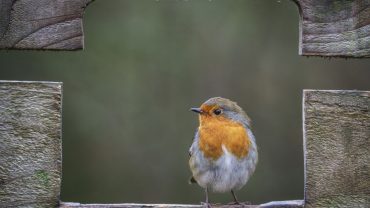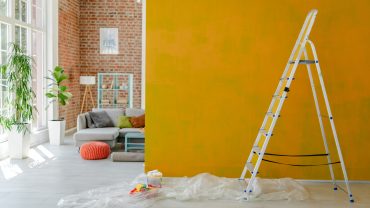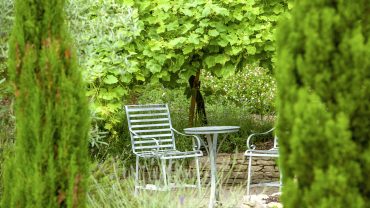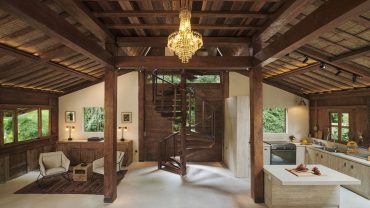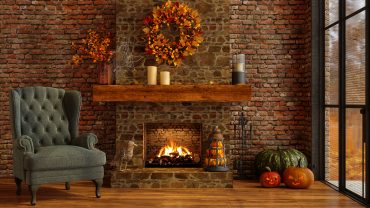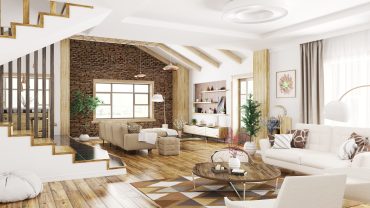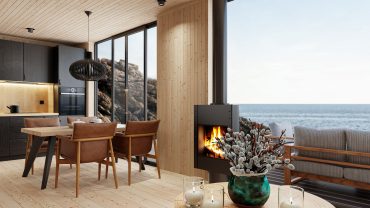What is rustic interior design? It’s a style characterised by simplicity and a connection to the past, often incorporating natural materials such as wood, stone, and metal, to create spaces that feel grounded and authentic.
Rustic interiors aren’t just about the aesthetic. It’s about creating a sense of comfort and ease, where the imperfections and tactile qualities of the materials are not just accepted, but celebrated.
If you’re renovating a Tuscan farmhouse bedroom, rustic decor may be just the ticket. You may also be looking to bring a touch of old-world nostalgia to a modern city-centre apartment. Whatever your decor desires, here is your guide to rustic interior design.
A Short History of Rustic Interior Design

A rustic cottage kitchen. (Credit: Mint Images via Getty Images)
Like a number of different interior design styles such as shabby chic, farmhouse interior design and the cottagecore aesthetic, rustic decor has something of an organic history.
Some say that it traces its roots back to the pioneering days of early American and European settlers, where it evolved from necessity to become a beloved style. Initially, it was born out of a need to use readily available materials and simple construction techniques. Log cabins and rural farmhouses, with their exposed beams and rough plaster walls, are quintessential examples of early rustic interiors.
Over time, this utilitarian approach has been transformed into a sought-after aesthetic, one that harks back to a simpler time and connects to the natural world.
The Principles of Rustic Interior Design

A typical rustic colour palette, featuring deep browns, muted browns and grey.
The principles of rustic interior design revolve around a few key concepts – simplicity, natural beauty, and a sense of warmth and comfort.
This design approach often includes a neutral colour palette, drawing from the range of tones found in the natural world, from deep browns and greys to warm creams and greens. Textures play a vital role, with rough-hewn wood, chunky knits, and other tactile materials adding depth and interest to the space. The rustic style also often incorporates upcycled or reclaimed items, highlighting a sense of history and sustainability. Furniture and decor tend to be sturdy and practical, with a focus on functionality as well as aesthetics.
What is Rustic Interior Design?

A bedroom interior in a winter cottage featuring a rustic interior design. (Credit: alvarez via Getty Images)
It’s natural, rugged, timeless, earthy, casual, aged and organic. It’s also raw, energetic, relaxed and weathered. Truth is, you can paint modern rustic interiors with a pretty broad brush, and there isn’t a set-in-stone criteria to achieve the look. However, there are key elements which have become hallmarks of this school of interior design.
Natural Materials, Cosy Colours

Rustic interior of a chalet-style cottage. (Credit: alvarez via Getty Images)
Key materials in rustic decor include wood, stone, metal, and natural fibres such as linen, wool, canvas and burlap, each contributing to the overall warmth and organic feel of the space.
The colour palette tends to be inspired by nature, with earthy and muted tones predominating. In terms of motifs and styles, rustic interiors often incorporate traditional patterns, and can range from the understated elegance of Scandinavian-inspired minimalism to the more ornate and cosy feel of a mountain lodge.
Fascinating Furniture

Upcycled furniture is often featured in rustic and traditional interior design. (Credit: Dougal Waters via Getty Images)
Rustic interior design often features furniture that exudes a sense of history and natural charm, often made from solid, unrefined woods like pine, oak, or cedar. These pieces tend to have a sturdy, handcrafted look, bringing an earthy, organic feel to the space.
There’s a distinctive appeal in the use of upcycled and reclaimed furniture, and whether you’re creating a lounge space, a kitchen or a bedroom, rustic decor furniture is always in-keeping with the natural theme. Upcycled pieces, often repurposed from older furniture or other materials, contribute a unique character and story, blending the old with the new in creative and eco-friendly ways. Reclaimed wood is also a popular choice, celebrated for its weathered appearance and rich history.
This approach not only adds authenticity and depth to the rustic aesthetic but also aligns with the style’s principles of sustainability and respect for the natural world. The furniture invites a sense of warmth and comfort, making each piece not just functional but a testament to the beauty of imperfection and time-worn elegance.
Traditional vs. Modern Rustic Interiors

A living space exhibiting a modern rustic interior. (Credit: asbe via Getty Images)
While traditional rustic interior design is characterised by its strong emphasis on rugged naturalism and a close connection to traditional country living, modern rustic interiors blend rustic elements with contemporary design principles, creating a balance between the old and the new. This style typically involves:
- Cleaner lines and a more streamlined approach to rustic elements;
- A mix of traditional rustic materials with modern materials like glass and metal;
- A neutral or cool colour palette, often incorporating greys, whites, and pastels alongside natural hues;
- Minimalist decor that focuses on simplicity and space, often with a focus on functionality;
- The integration of modern amenities and technologies in a way that complements the rustic aesthetic, rather than detracting from it.
The primary distinction lies in the approach to design and decor. Classic rustic interiors are more about preserving the traditional, old-world feel, while modern rustic marries the rustic charm with contemporary trends and comforts. This makes modern rustic interiors suitable for those who appreciate the warmth and naturalness of rustic style but prefer a more updated, less cluttered, and more sophisticated look.
Embracing Nature: The Enduring Appeal of Rustic Interior Design

A wooden surface top, commonly featured in kitchens that utilise a rustic design. (Credit: didecs via Getty Images)
What is rustic interior design? It’s a timeless style that offers a unique blend of natural beauty, simplicity, and comfort. Its ability to adapt, whether in its classic form or modern interpretation, allows it to seamlessly fit into various living spaces. This style is about fostering a sense of connection to nature, embracing the imperfections of natural materials, and building a space that feels grounded and inviting.
Whether you’re drawn to the traditional charm of classic rustic decor or the sleek blend of old and new in modern rustic, this approach to interior design provides a warm, welcoming environment that celebrates the beauty of simplicity and the elegance of the natural world.

